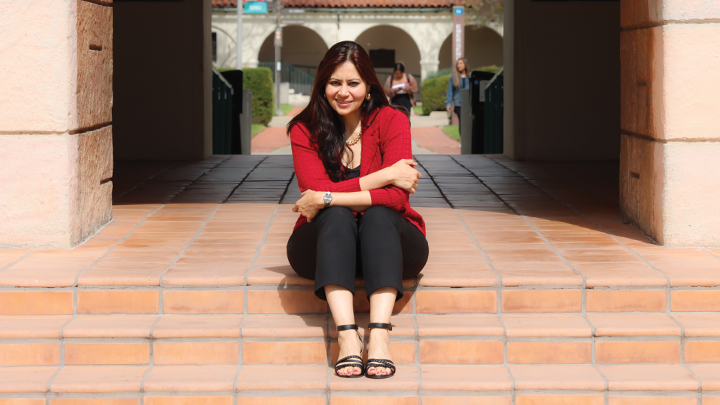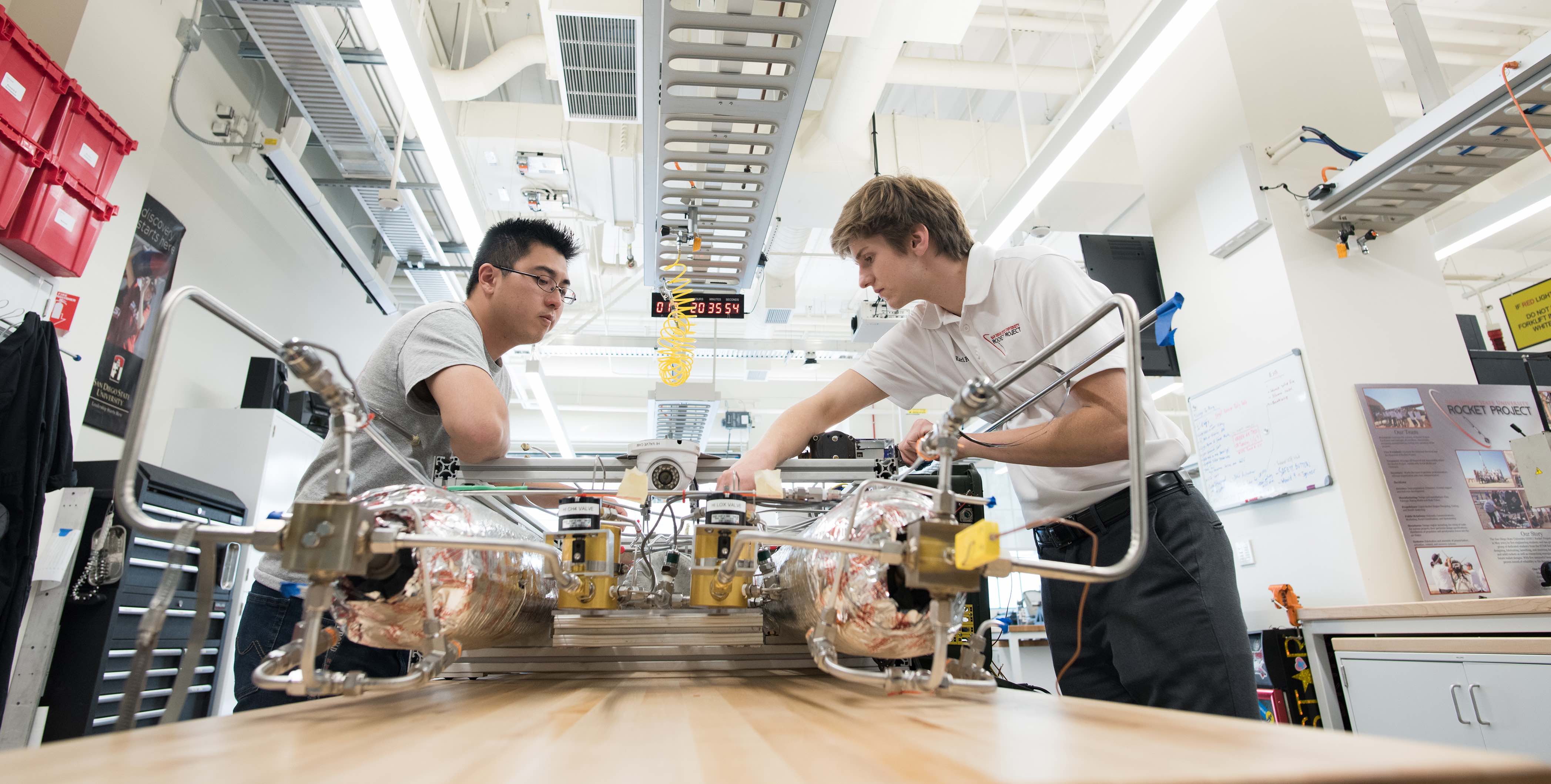Q&A with Mahasweta Sarkar: Balancing STEM leadership, motherhood and research

Eighteen years ago, San Diego State University alumna and Professor of Electrical and Computer Engineering Mahasweta Sarkar was hired as the first tenured female faculty member in her department. Today, she also serves as senior associate dean of Global Campus and on several committees across campus.
Born and raised in India, Sarkar was surrounded by strong role models, including her father and aunt who are both civil engineers. This sparked her desire to also become a professional in the STEM field.
However, during the 90’s it was not as common as it is today for women to pursue an undergraduate degree in a foreign country. Still, Sarkar has excelled in numerous ways, becoming a leader in her field and an inspiration to other aspiring engineers.
“I am very grateful for all of the opportunities that have come my way that allow me to give back to our current and potential students,” said Sarkar. “I am especially enthusiastic about nurturing the evolving needs of a brand new generation of non-traditional learners and weaving that into the fabric of our traditional higher education institutions. Any small impact that I can make on someone’s life is a blessing.”
She completed her undergraduate degree in computer science at SDSU and graduated summa cum laude in just 2½ years, later earning a doctorate from the University of California San Diego.
Currently, Sarkar and her SDSU colleagues are addressing falls in elderly adults.
“70% of deaths in seniors happen because they fall and there is no one there to help them,” she said. “Our team is developing smart sensors that will be able to detect when a person falls and alert help immediately.”
SDSU asked Sarkar about her experience as a woman in engineering, research projects, her role with Global Campus, and her advice to upcoming women in STEM.
What challenges have you faced as a woman in engineering?
The challenge of balancing motherhood, education, and career. In August 2003, when I was eight months pregnant with my son, I took a two-hour oral exam for my Ph.D. program. When he was 1 year old, I took my Ph.D. qualifying exams. When he was 2 years old, I defended my thesis and graduated in December 2005.
After eight months of working in the U.S. Naval Research Lab at SPAWAR as a senior scientist, I joined the Department of Electrical and Computer Engineering at SDSU as a tenure track Assistant Professor. It was a grueling eight-hour-long interview process. It took a lot of hard work and time management to balance all of these commitments.
How did you overcome the challenges of being a new professor in a male-dominated field?
I always felt that I had to go the extra mile to prove myself. I often feared that my role as a mother could be held against me and possibly set me back in my career. It took me several years to get out of that mindset. Through my experiences, I’ve learned to speak up for what I need at work and to advocate for an environment that supports my well-being. I am a lot more vocal today about these aspects of work-life balance, especially for women and those underrepresented in STEM, than when I joined the university almost two decades ago.
Take us behind the scenes of your lab. How do you apply your research?
At my Wireless Network and Communication (WINC) Lab, we research wireless networks and apply this work to several high social impact areas such as healthcare. In addition to addressing falls in seniors, we are also working to develop cost-effective ways to connect 47% of the world that is still detached from the grid.
Additionally, from 2011-21, I served as a researcher and education co-director of the National Science Foundation (NSF) funded Engineering Research Center called the Center of Neurotechnology. My students and I investigated the brain computer interface with the aim to restore animation in human paralyzed limbs. The same idea can be applied to wounded veterans, for instance. We researched ways to make the prosthetic limbs function as close to human limbs as possible by exploring the possibility of executing actions through our thoughts.
As a faculty member and administrator, students are the center of your work. Tell us about the impact you’re making in your various roles across campus.
I served on the DEI Council of the University and as a Senator in the University Senate’s DEI arm, which gave me exposure to university-wide administrative opportunities. In fall 2022, I was appointed as the director of International Affairs and traveled on a Fulbright Fellowship to the Indian Institute of Technology, Madras, and PSG College of Technology, Coimbatore, which allowed me to expand my DEI work to rural communities in India.
Since 2018, I have been working with Global Campus in a number of capacities. First, I served as the graduate advisor to actively promote our department’s online graduate programs to an international audience.
My Indian origin has helped me understand the need and cultural mindset of not just the Southeast Asian student audience, which comprises about 1 ⁄ 3 of the world’s population and close to 3/4th of our international student body, but also of any student who comes to us from a foreign country.
Through that experience, I recognized that I could work alongside Global Campus to highly impact the global footprint of the University. Now serving as the senior associate dean, I collaborate with a talented team led by Dean Ian Gibson, to take SDSU to local, national and global learners. My academic background has uniquely helped me in establishing cutting-edge STEM program degrees and certificates.
In addition, I am the Co-PI on a grant that supports students with disabilities in STEM across 37 universities around the U.S. All of this work ties directly into Global Campus’s mission of bringing education to communities for whom the traditional structure of education may not apply.
I constantly think creatively about how education can be brought to the increasing numbers of non-traditional learners and I’m grateful for all of the opportunities that have allowed me to give back to our current and future students.
What advice would you give to aspiring women in STEM?
Let no one tell you what you can and cannot achieve. Have tremendous faith and confidence in yourself. I especially thank my mom, for instilling that belief in me. However, be open to feedback and let the sky be your limit.

